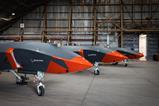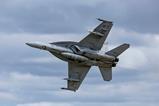NATO will spend hundreds of millions of dollars in the coming years to equip several member states with Stinger anti-air missiles.
The NATO Support and Procurement Agency (NSPA) on 9 June awarded a contract to US munitions manufacturer Raytheon, which produces the combat-tested anti-air missile.
“Just today the NSPA signed a new multinational contract for Stinger missiles worth almost $700 million,” said outgoing NATO secretary general Jens Stoltenberg.
The deal covers 940 Stinger systems for Germany, Italy and the Netherlands. Stoltenberg was speaking at a gathering of defence industry officials in Washington DC, where leaders from all 32 of the alliance’s member states are arriving on 10 June for the annual NATO summit.
The Stinger order from Brussels continues the resurgence of a Cold War icon, which had previously exited production.

Raytheon began assembling the shoulder-launched, heat-seeking missile in the late 1970s, during the height of global military competition between Washington and Moscow. The weapon achieved global prominence for its effectiveness against Soviet helicopters in the 1980s Afghanistan War – where Stingers were covertly fielded to mujahideen insurgents.
Raytheon claims the Stinger has more than 270 confirmed intercepts against fixed- and rotary-wing aircraft. The man-portable system is fielded by at least 19 countries and the four combat branches of the US military.

In 2019, the US Army began retrofitting its existing Stinger missiles with proximity fuses, which allow them to destroy unmanned airborne systems with direct hits or by detonating near them, according to the manufacturer.
An internal guidance system and seeker head allows the Stinger to acquire and track airborne targets without large infrastructure like ground radars. Raytheon describes the guided missile as “an integral component of a multi-layered air defence system”.
After decades without Western forces facing significant threats from the air, the Stinger has once again proven its combat effectiveness as a short-range air defence platform in Ukraine, where Kyiv’s forces have used it to target Russian tactical aircraft.
That performance, combined with munitions stocks being depleted by donations to Ukraine from North America and Europe, has generated new demand for Stingers in the present.
The US Army in 2022 placed a $624 million order for at least 1,300 missiles – the first such order in two decades. Raytheon dusted off paper schematics and recalled formerly retired engineers to service in order to restart Stinger production and fill that order.
Raytheon tells FlightGlobal it has made “significant enhancements” since then, including to production facilities, output capacity and staffing, with the goal of accelerating Stinger manufacturing.
“The team is on track to realise a 50% increase in production capacity from 40 to 60 missiles per month as part of its US government contract execution,” the company said on 9 June.
That capacity is currently being applied to the Pentagon’s order, plus a small quantity destined for an unspecified overseas customer. The Stinger contract from NATO headquarters will keep the Raytheon assembly line working without interruption until 2029.
“This contract will provide predictability and further support accelerated production with advanced procurement of inventory, continued modernisation and ensure continuous deliveries of this critical, combat-proven capability,” the company says.
Stoltenberg lauds the move as an example of NATO’s renewed commitment to collective security by supporting defence manufacturers.
“There is no way to provide strong defence without a strong defence industry,” Stoltenberg says.
After 10 years as head of the Euro-Atlantic military bloc, Stoltenberg will be succeeded by former Dutch prime minister Mark Rutte in October.
Story updated 10 July to include more details of the Stinger order from NATO































